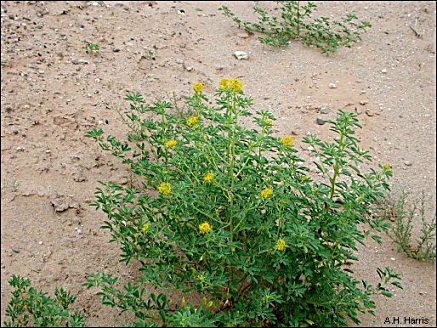
The month of May is pretty bleak in parts of our Chihuahuan Desert. Spring drought has gripped the land for months, and the summer rains yet to come. Creosotebush and Honey Mesquite may supply color to the land, but sandy soils otherwise display little except the brown skeletons of last year's annuals and perhaps a few minute buckwheats barely discernible against the ground. Thus it comes as a pleasant surprise to see a fair-sized, green, clover-like plant with yellow blossoms gracing the bottom of sandy arroyos. It's common name of Jackass Clover hardly does it justice.
Although doing splendidly with its chore of beautifying desert sands,
Jackass Clover seems of minimal economic importance. The foliage is reported to be
toxic to humans, but it seems unlikely many people would be apt to browse on it. On the
positive side, it is reputed to be an excellent honey plant. So it's hot and dry
and who wants to go out into the desert in late spring! Just maybe you should—you might
be surprised at what's out there.
![]()
Contributor: Arthur H. Harris, Laboratory for Environmental Biology, Centennial Museum, University of Texas at El Paso.
Desert Diary is a joint production of the Centennial Museum and KTEP National Public Radio at the University of Texas at El Paso.

Jackass Clover (Wislizenia refracta growing in the bottom of a small arroyo in late May. Photograph by A.H. Harris.